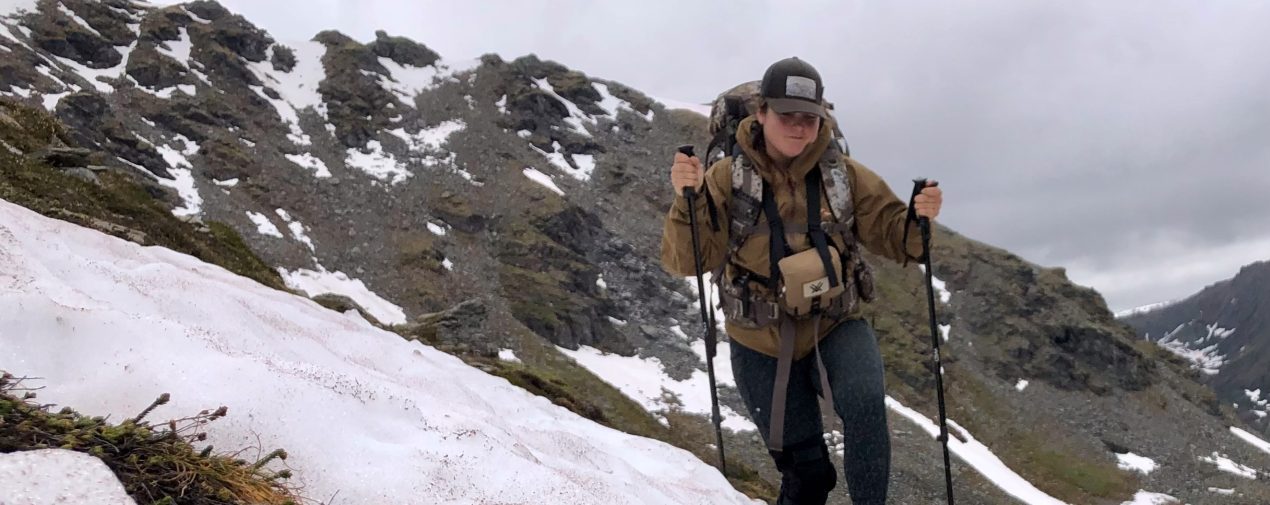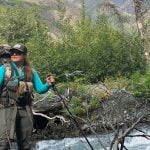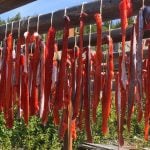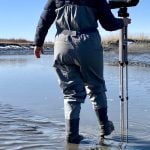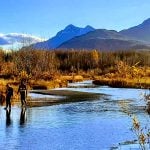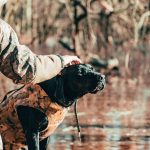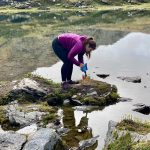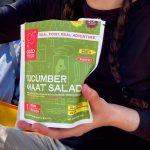Gearing up for Success – Hunting in the Backcountry
If you are looking to challenge yourself, heading off the trail on foot for a hunt is a great option. Hunting in the backcountry can be highly rewarding but requires thorough planning. With many outdoor sports –having good gear correlates mainly to making your trip more luxurious. But when hunting in the backcountry, having proper gear is directly related to your safety. Some items such as moisture wicking clothing, freeze dried meals, maps, sleeping gear, and a water filtration system can be the same set up you use for backpacking (you don’t NEED camo), others should be more carefully selected. Here are a few essential items to have when venturing deep into the wilderness. Pro tip: many of these brands offer great deals on Pursuit Prolink!
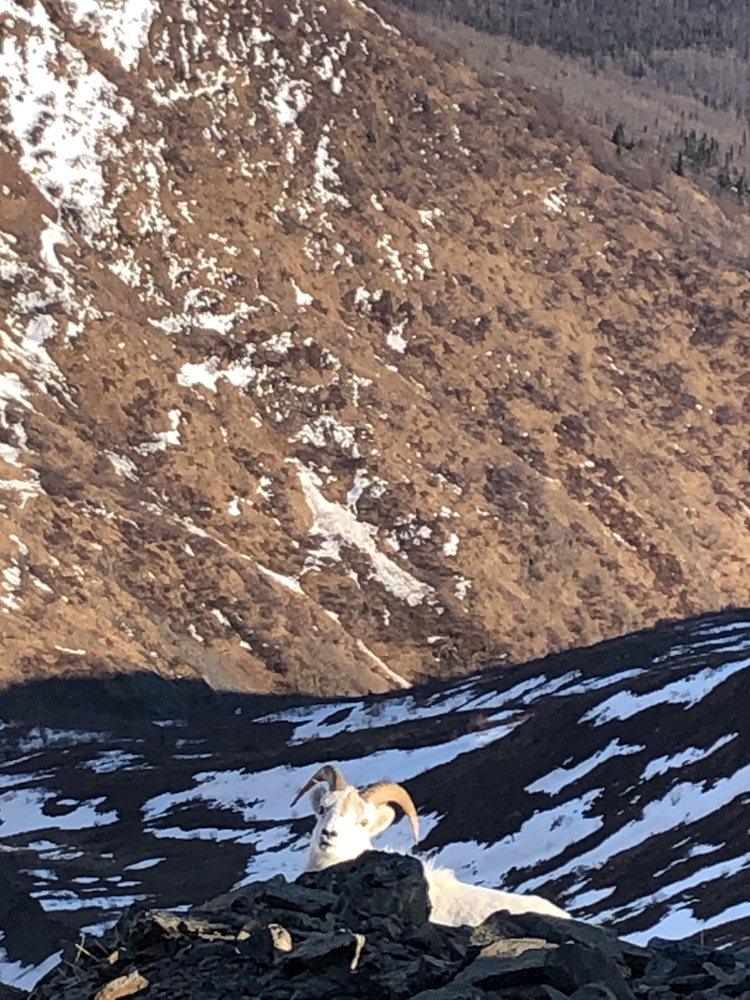
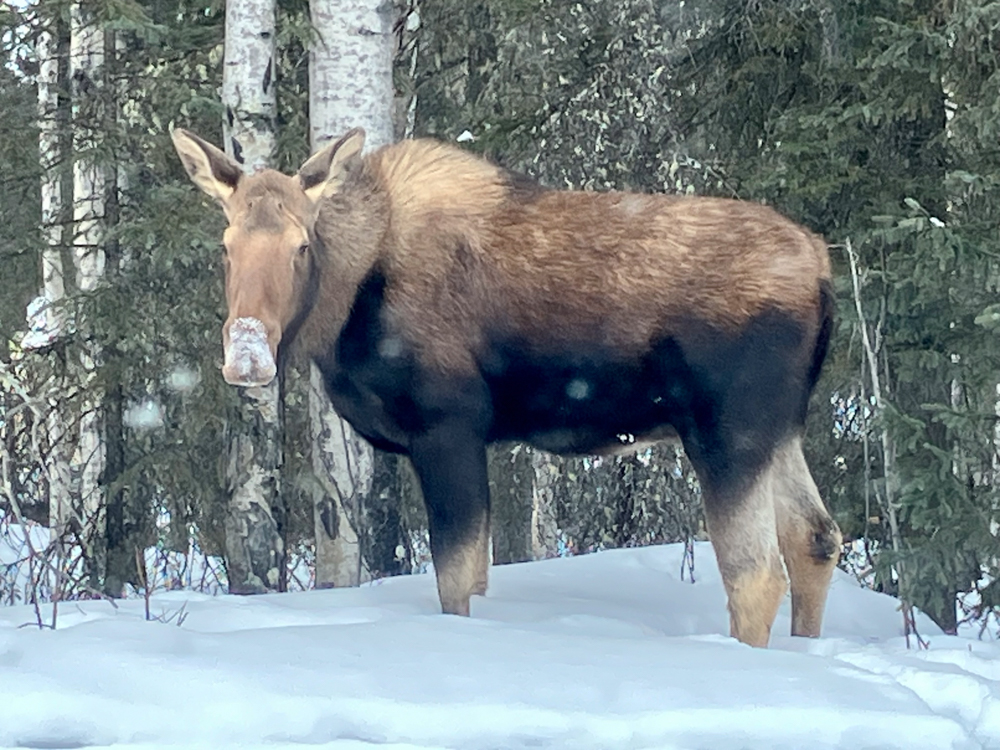
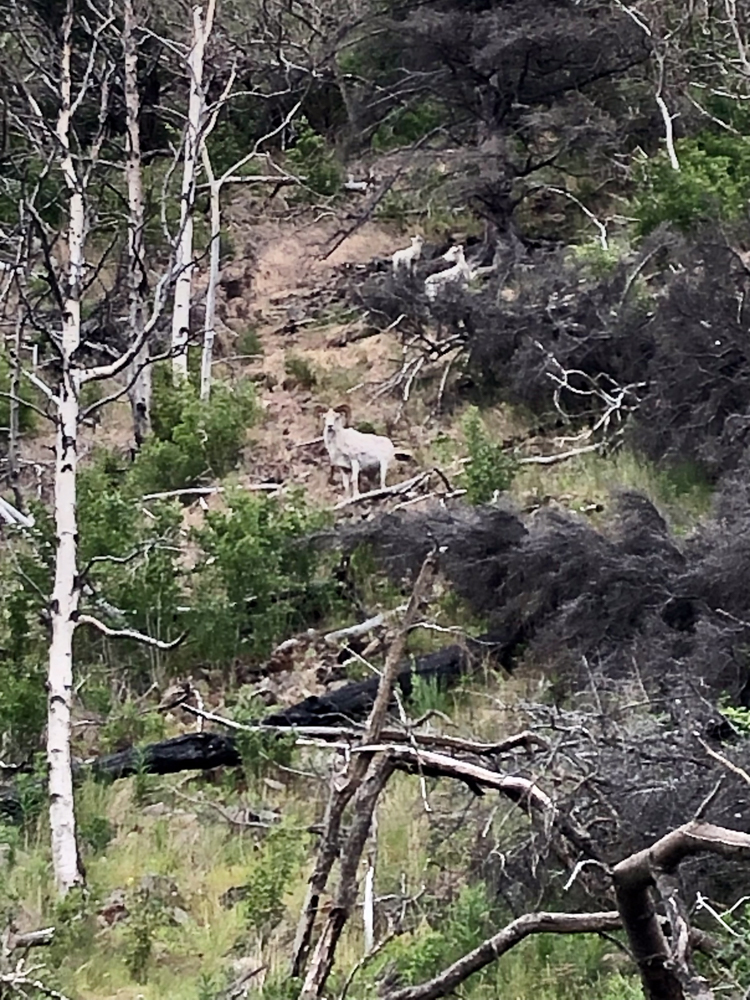
Backpack
Consider the fact that your pack will need to carry not only your personal gear, but also potentially 100+ pounds of meat should you end up successful. External frame packs might not be trendy for backpacking anymore, but they are essential for hunting. Many hunters also prefer a pack set up that allows you to separate the main compartment from the frame should you need to take multiple trips and shuttle meat back to your point of origin. If at all possible, try on a backpack in person before purchasing as they fit everyone differently. Also, if you’ve never had a professional show you how to fit your pack, be sure to take advantage of a knowledgeable sales professional. A few small adjustments can make a world of difference in comfort.
Shelter
Though you might have a tent or a cabin set up to base your hunt out of, you should still have a means of setting up a shelter in your pack at all times. Chasing game might lead you further from base camp than originally planned. You will then have an option when it comes time to decide whether to pursue the trophy animal you just spotted or turn back to camp before nightfall. Mountainous terrain is also famous for bad weather moving in quickly. At minimum, you should always carry a tarp, which can also be helpful in keeping meat clean when field dressing your animal.
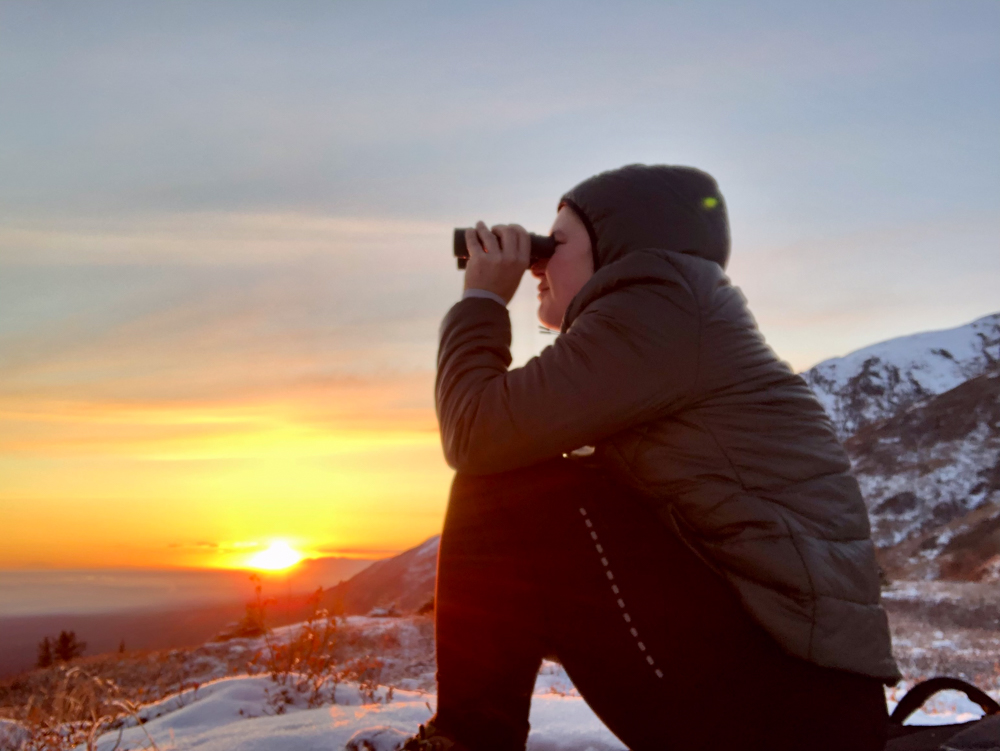
Optics
Speaking of spotting game, you will most definitely want to carry good optics. Ask any hunter how good they need to be and you’ll likely get the answer of, “As good as you can afford.” Having good optics will not only help you to spot animals, but also can save you miles of hiking trying to determine the legality of what you spotted. A spotting scope is ideal, but not always practical to carry. Good binoculars are a must! I’m a big fan of Vortex. They carry a wide variety of optics and accessories for all budgets.
Boots
Footwear should also not be skimped on. Different from backpacking where you are often on an established trail with your ultralight gear, you will be traversing uneven terrain potentially with a large load on your back. Ample ankle support, warmth, and grip need to all be considered carefully to ensure you can walk out of the woods safely. Boots are another item that should be tried on before purchasing. Different brands work well for different foot types. Of course, be sure to break in your boots before heading out to ward off blisters and other discomfort.
Trekking poles
Another great tool to help with packing a large load over tricky terrain is trekking poles. Even if you do not typically hike with poles, consider bringing them on your hunting trip. Not only will it help you move more efficiently with a heavy pack, you will find river crossings and snowfield traverses infinitely easier and safer. In a pinch, even using a strong branch as a walking stick will help.
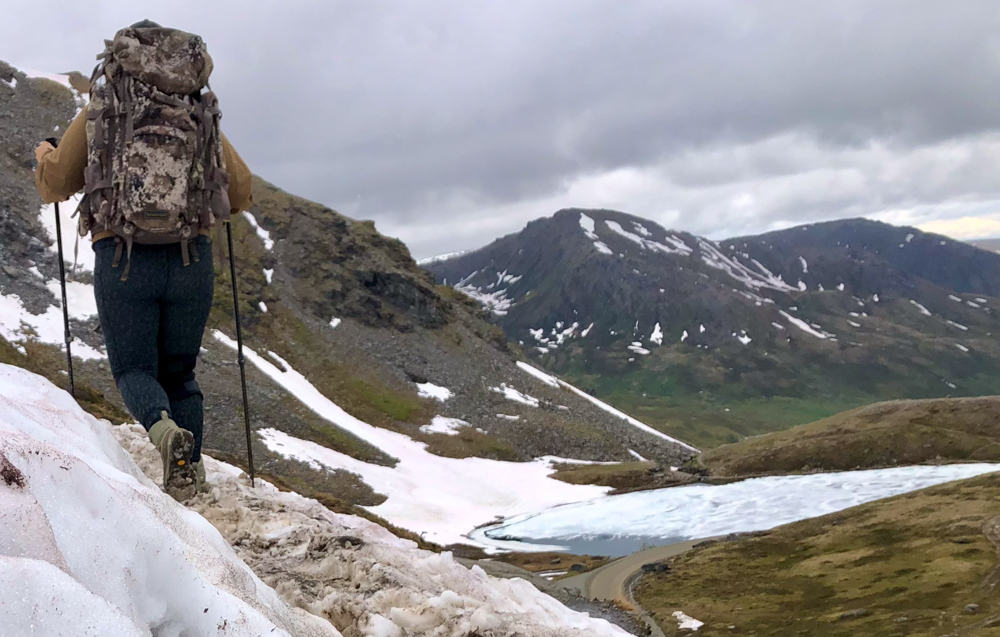
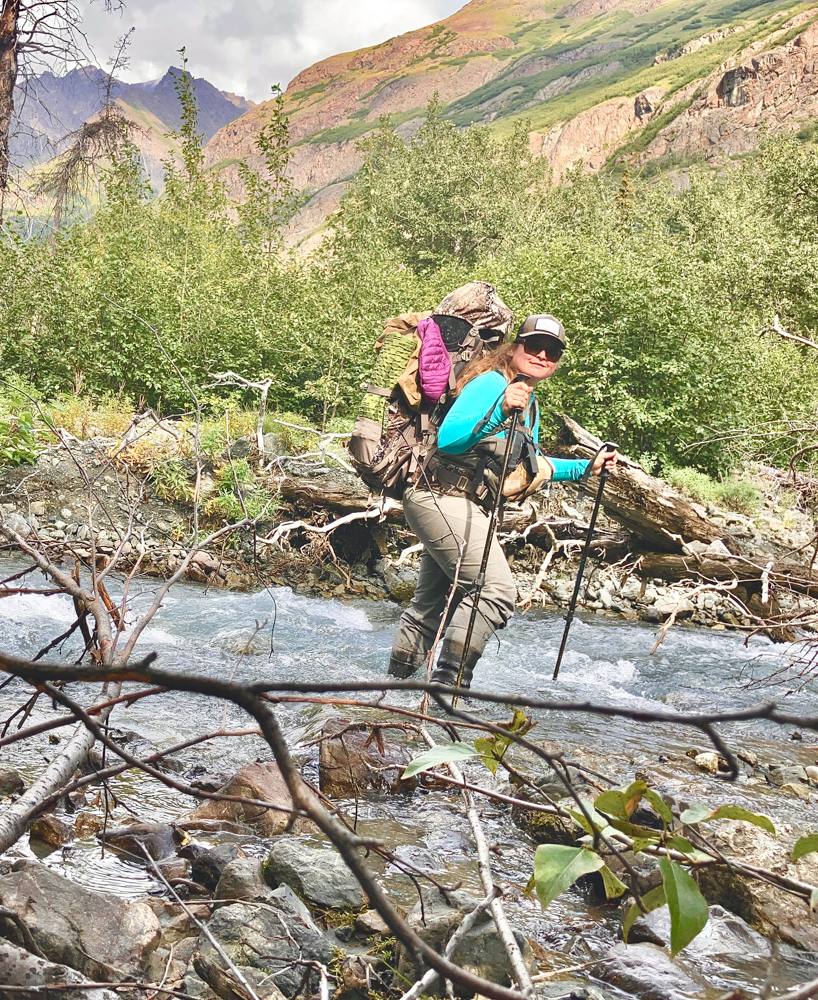
First Aid Kit
While we should always carry first aid equipment when heading into the great outdoors, it is even more important when hunting. You are potentially far from any help with numerous sharp and deadly items. Knife accidents when caring for your kill can happen easily. Also, if you are hunting with a dog or on horseback, remember to pack items to ensure their safety should an accident happen. Contact your veterinarian to set up a plan for first aid supplies specific to your companion.
Trail Markers
You will most often be blazing your own trail while out hunting. Though a GPS is a great tool we should all carry (and will be helpful as well), I suggest physical trial markers, too. Plotting accurate way points on a GPS can be challenging if you are in terrain that doesn’t allow for great satellite connectivity and electronics can fail. Big game will often take several trips to retrieve all salvageable parts from. Fatigue is inevitable and when we are all most likely to make mistakes. Carrying a role of flagging tape or other physical marker system can help immensely. This is also handy should you have to follow a blood trial. Of course, remember to leave no trace and pick up your markers on the last trip out. I enjoy using OnX Maps for plotting way points, monitoring terrain, and tracking access.
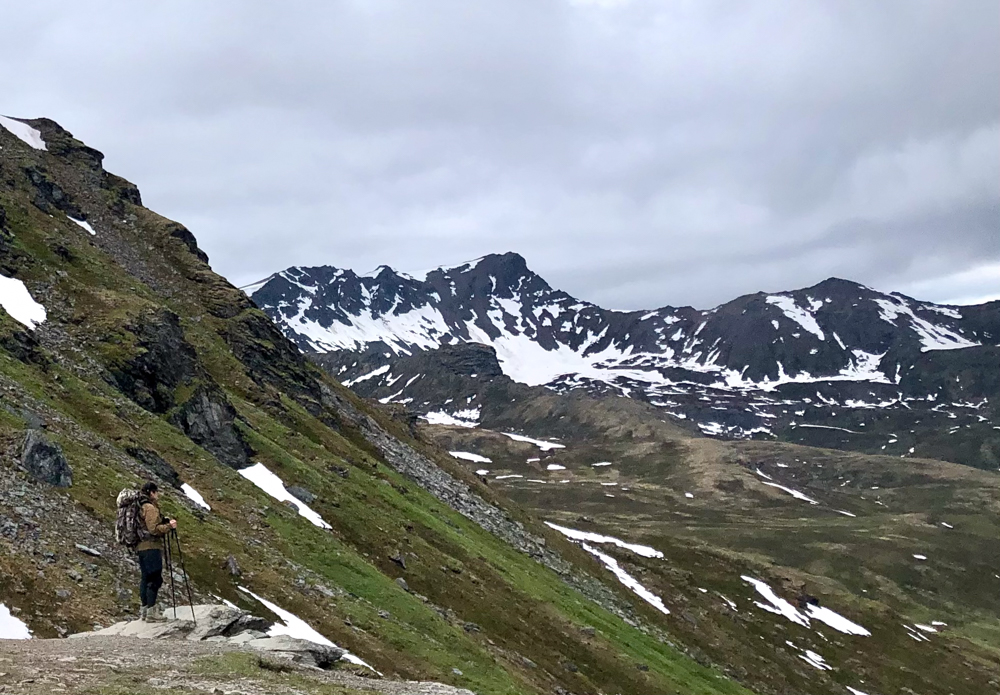
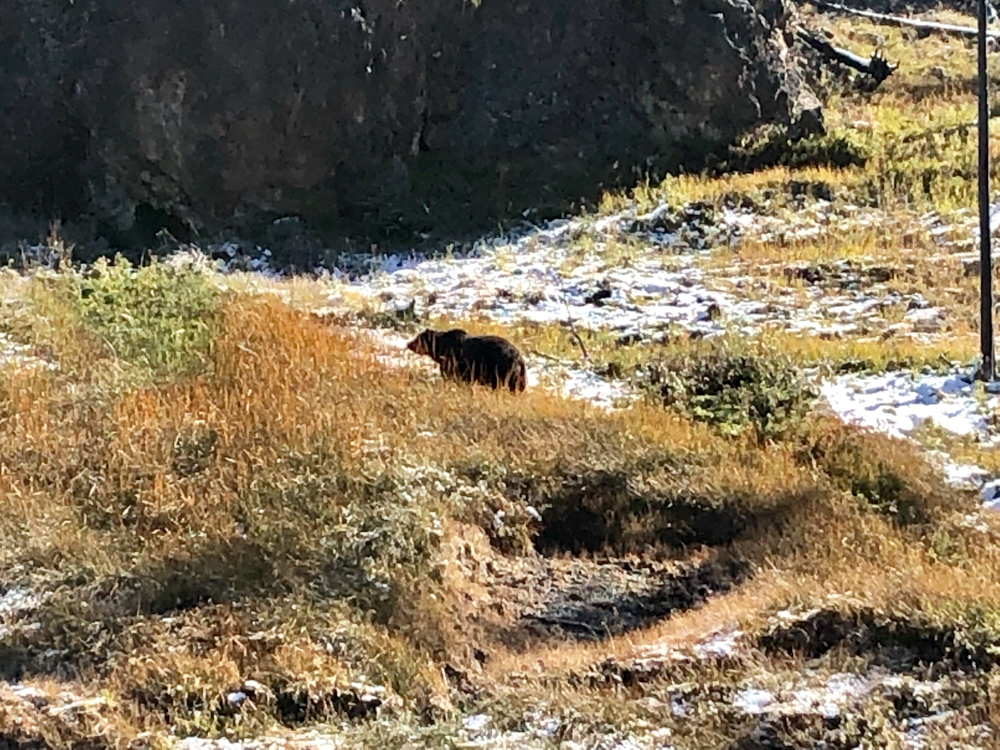
Bear Safety
Depending on where you are hunting and the type/strength of your weapon, you may need to carry additional protection from predators. Predators are drawn to the scent of the kill and happy to take advantage of a free meal. At minimum, bear spray or a side arm of appropriate caliber should be considered for each person to carry.
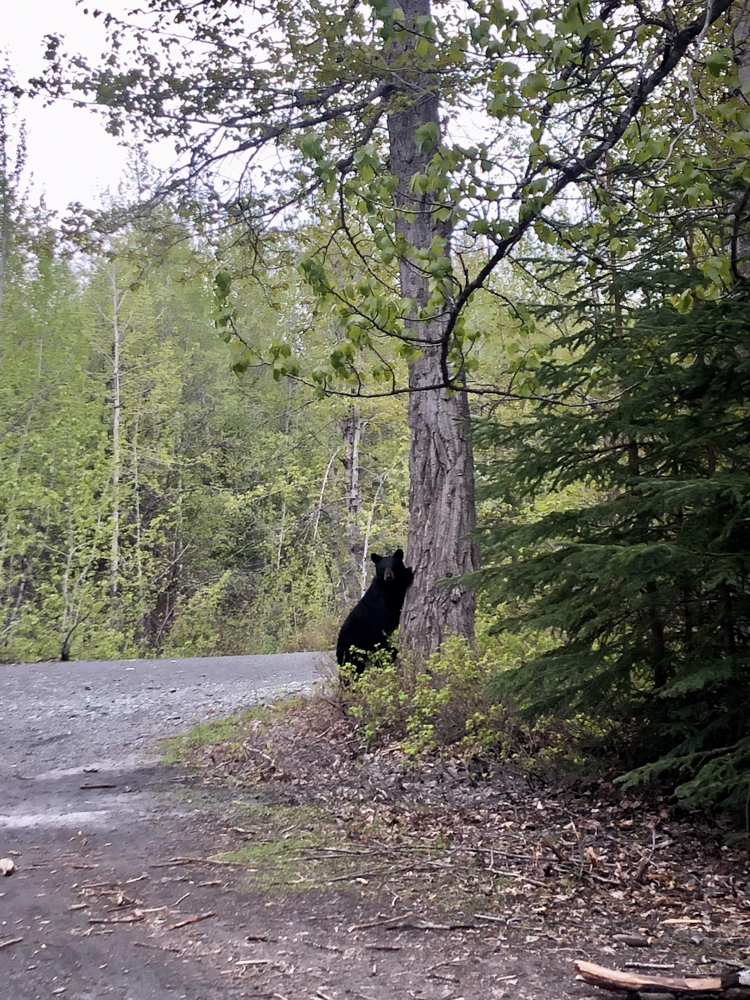
Knife
Careful consideration should be taking when selecting what knife to bring. Blades quickly dull when dressing animals. A dull knife leads to a greater risk of accidents and slows your work. Plan to bring multiple knives, a sharpener, and/or a knife with an easy to change blade system.
Field Dressing Kit
Your field dressing kit will vary depending on personal preference and species targeted. At minimum, you will want to remove the entrails from the animal to promote cooling of the meet and ward off spoilage. Likely, you will not be packing out the entire animal or deboning your meat in the field. You will want a bone saw to break the animal down into smaller, easier to carry pieces for packing out. Also, pack some disposable gloves in your kit. While the risk of contracting blood borne pathogens from wildlife is low, it’s even lower when gloves are worn. Outdoor Edge has some great pre-assembled kits and easy to use knives to get you started.
Read the review of the Outdoor Edge Razorguide Pak Hunters Combo Kit.
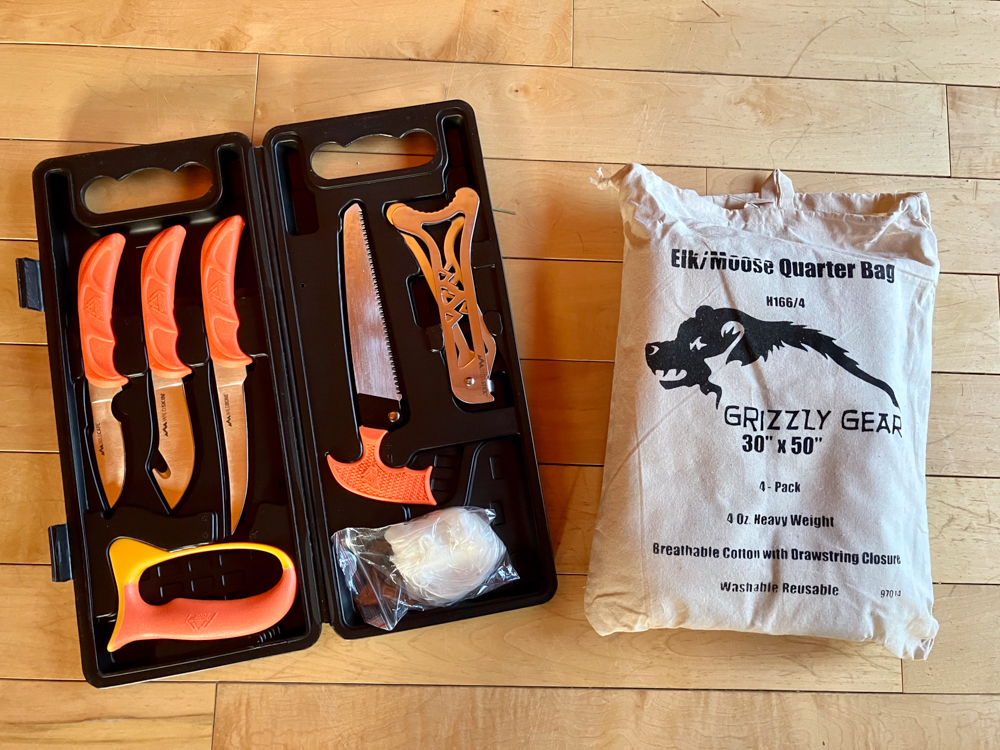
Meat Care
As an ethical hunter, your top priority other than personal safety should be preserving the meat. Meat spoils quickly when not cooled. Game bags are made of light fabric and help promote air circulation to the meat, as well as protects it from insects and dirt. Bags can be made from linens or are very affordable to purchase commercially. If camping out with your meat, cordage is great to carry to hang the meat at night and further continue the cooling process. Meat should also be kept away from water and wet surfaces.
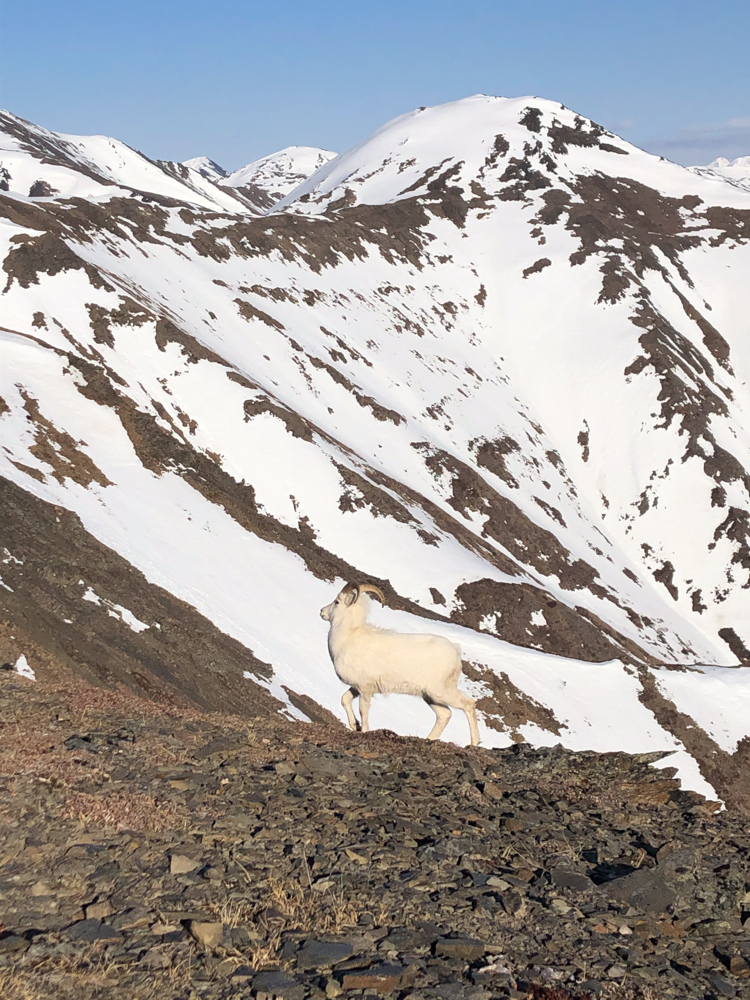
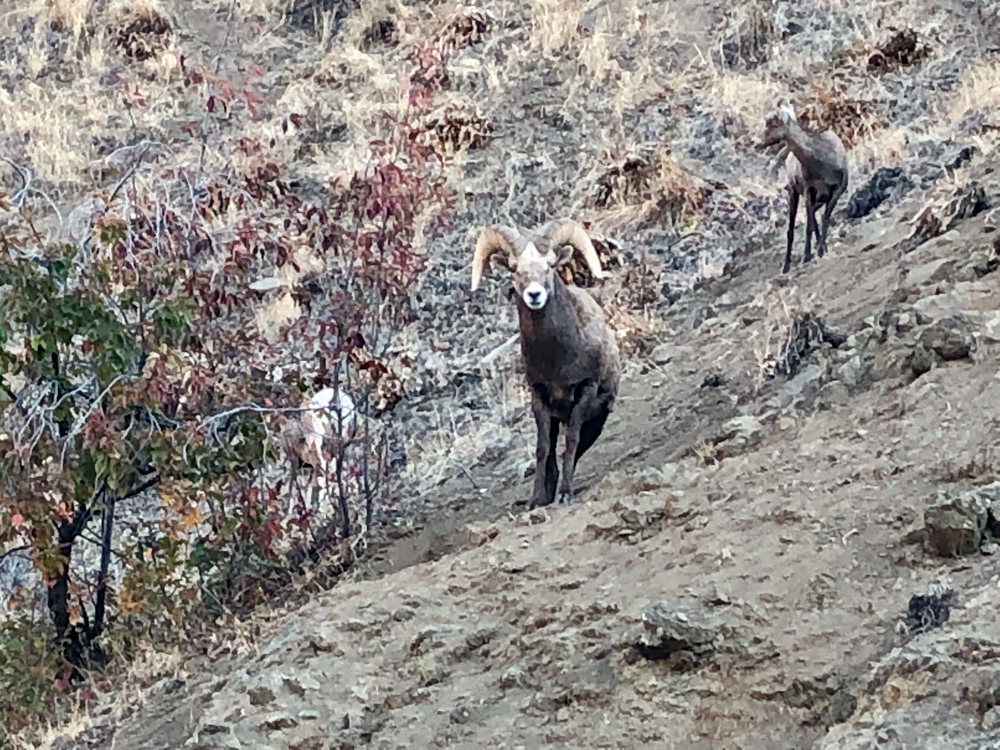
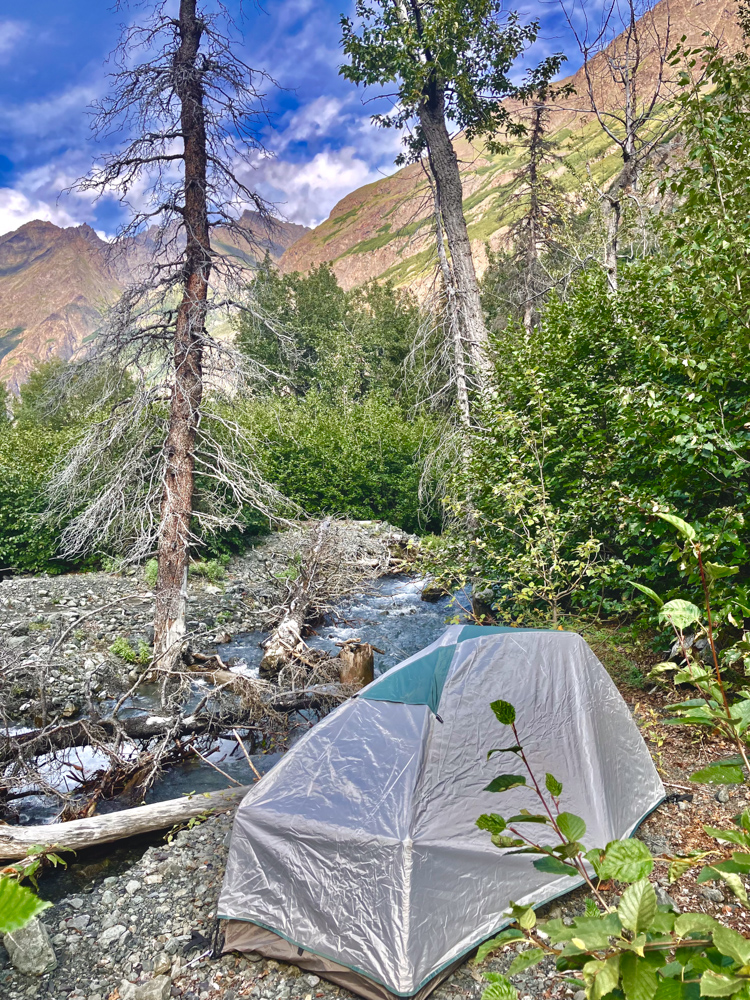
A Strong Body and Mind
Hunting in the backcountry is arguably one of the most challenging physical pursuits you can undergo and there is never a guarantee of success. Physical conditioning leading up to your hunt will make this a still hard but much more enjoyable experience. Mentally, be sure to take in the beauty of your journey, the accomplishment of taking on this challenge, and appreciation for the raw forces of nature. Success rates of DIY backcountry hunts are quite low, especially when starting out.
Like any sport, there is a learning curve. Nothing can prepare you as well first hand experience. Setting yourself up for success with the proper gear will certainly put you one step ahead and help keep you safe to continue chasing your goals for years to come.
About the Gear Tester
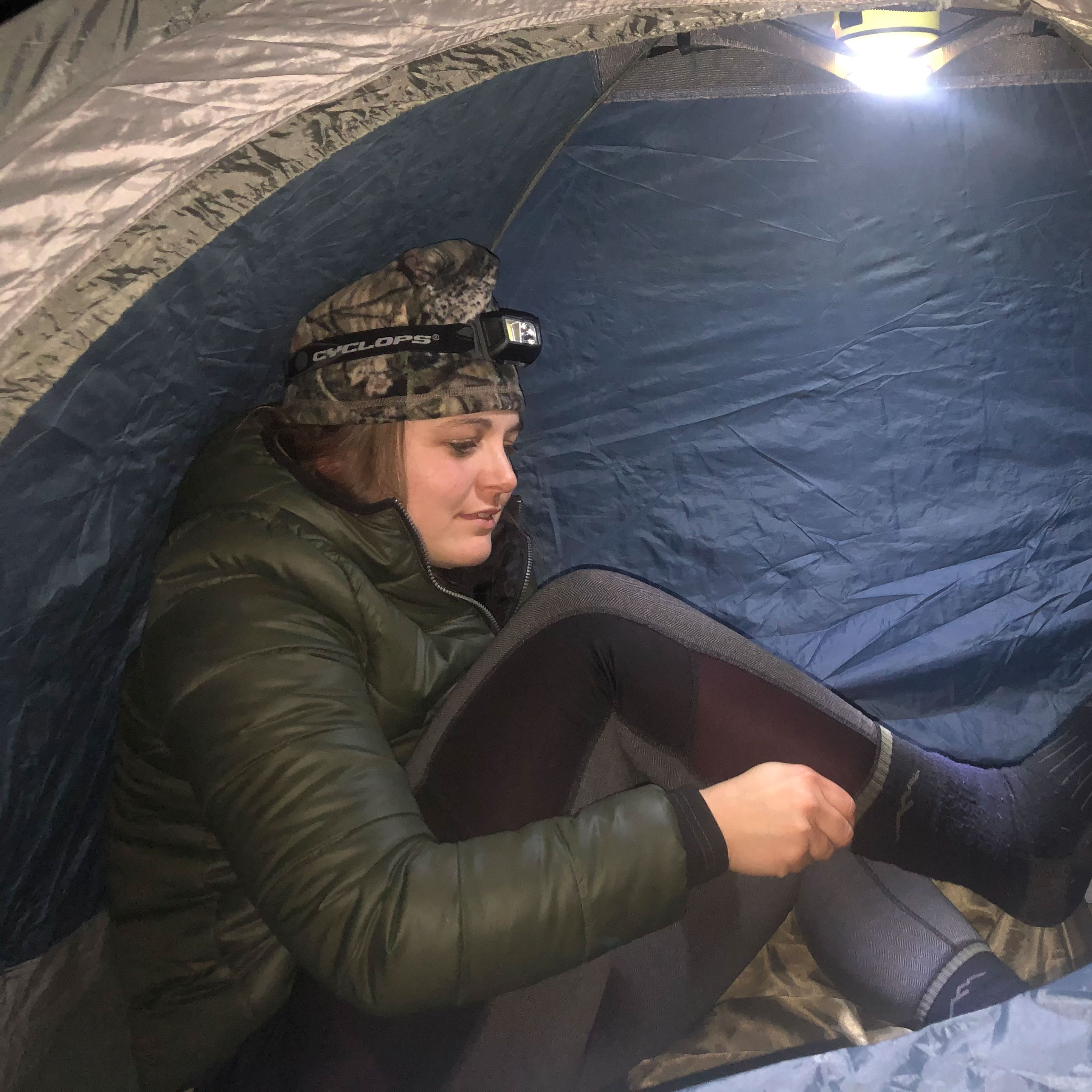
Michelle Beadle
Michelle currently resides in Alaska working and volunteering in the conservation field for various government, tribal, and non-profit entities on projects in remote areas. When not at work, you can find her hiking, skiing, climbing, horseback riding, running, biking, hunting, fishing, or trying out new ways to explore the outdoors. She can be found on Instagram under michelle_ventures.

